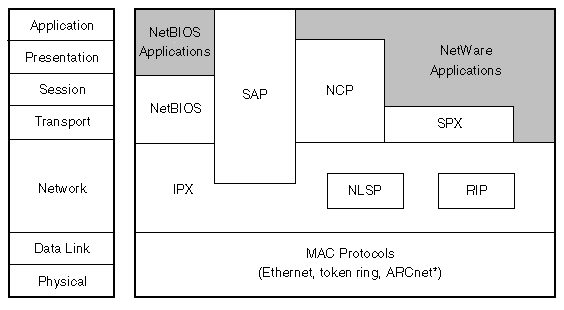

  |
This section describes the processes and protocols that govern Internetwork Packet ExchangeTM (IPXTM) routing in the NetWare® networking environment. In particular, it examines the mechanics of IPX packet routing and the administration of routing and service information on an IPX internetwork.
Each NetWare protocol plays a different role in enabling a NetWare router to perform its tasks. Media access control (MAC) protocols and IPX provide the addressing mechanism that delivers packets to their destination. The Routing Information Protocol (RIP), Service Advertising Protocol (SAP), and NetWare Link Services ProtocolTM (NLSPTM) protocols provide the means by which routers gather routing and service information and share it with other routers on an internetwork.
Although the NetWare Core ProtocolTM (NCPTM) software does not play a direct role in routing, it does provide session control and packet-level error checking between NetWare workstations and routers. Similarly, the Sequenced Packet ExchangeTM (SPXTM) protocol neither routes packets nor advertises service information, but guarantees delivery of each packet to its destination.
Figure 1 shows how the NetWare protocols correspond to the Open Systems Interconnection (OSI) reference model. Because this model represents only a basic framework for networking functionality, not all NetWare protocols fit neatly into a single functional layer.
Figure 1
How NetWare Protocols Correspond to the OSI Reference Model
The higher-level protocols (NetBIOS, SAP, NCP, SPX, NLSP, and RIP) rely on the MAC protocols and IPX to handle lower-level communications, such as node addressing. With the exception of NetBIOS, NCP, and SPX, each of these protocols plays a role in the operation of IPX routing.
  |